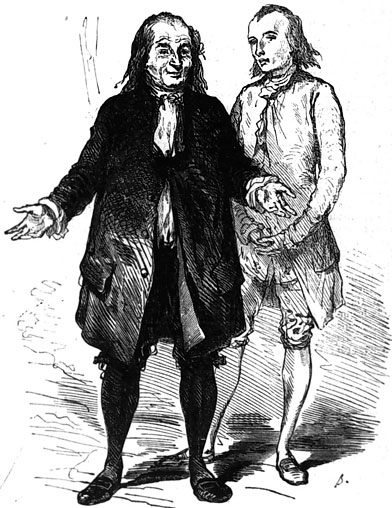Gould's Spandrels challenges the overly optimistic Panglossian Paradigm of NeoDarwinism
"All is for the best in this “best of all possible worlds."
"It is impossible that things should be other than they are; for everything is right"
- Dr Pangloss
The Spandrels of San Marco and the Panglossian Paradigm: A Critique of the Adaptationist Programme by Stephen Jay Gould and Richard Lewontin is a seminal paper in evolutionary biology that challenges the adaptationist program of neodarwinism. The adaptationist program is a theoretical framework that views all organic form, function, and behavior as adaptations to the environment. Gould and Lewontin argue that the adaptationist program is too Panglossian, or overly optimistic, in its view of evolution. They use two metaphors to illustrate their point: the spandrels of San Marco and Dr. Pangloss.
The spandrels of San Marco are the triangular spaces between the arches of St. Mark's Basilica in Venice, Italy. They are often decorated with beautiful mosaics, but these mosaics were not designed to fit the spandrels. Rather, they are a byproduct of the architectural constraints of the basilica. Gould and Lewontin argue that many biological features, like the spandrels of San Marco, are not adaptations, but rather byproducts of other constraints, such as developmental constraints or historical constraints.
Dr. Pangloss is a character in Voltaire's novel Candide. He is a naively optimistic philosopher who believes that everything that happens is for the best. Gould and Lewontin use Dr. Pangloss to represent the adaptationist program's view of evolution. They argue that adaptationists are too quick to explain every biological feature as an adaptation, without considering other possible explanations.
Gould and Lewontin's paper has been highly influential in evolutionary biology, and it has helped to shift the focus of research away from NeoDarwinian adaptationism and towards a more pluralistic view of evolution.
Challenges to Neodarwinism
The Spandrels of San Marco paper challenges neodarwinism in a number of ways. First, it challenges the adaptationist program, which is a central tenet of neodarwinism. Second, it questions the idea that natural selection is the only important force driving evolution. Third, it emphasizes the role of constraints in evolution.
Adaptationism
Adaptationism is the view that all organic form, function, and behavior are adaptations to the environment. Adaptationists argue that natural selection has shaped all aspects of life to maximize fitness, or reproductive success.
Gould and Lewontin argue that adaptationism is too Panglossian, or overly optimistic, in its view of evolution. They point out that many biological features are not adaptations at all. For example, the spandrels of San Marco are not adaptations to house the evangelists, but rather byproducts of the architectural constraints of the basilica. Similarly, many biological features are not optimal adaptations, but rather compromises that have been shaped by multiple constraints.
Natural Selection
Natural selection is the process by which organisms with traits that are better suited to their environment are more likely to survive and reproduce. Natural selection is the central force driving evolution in neodarwinism.
Gould and Lewontin argue that natural selection is not the only important force driving evolution. They point out that other factors, such as developmental constraints, historical constraints, and genetic drift, can also play a significant role in evolution.
Constraints
Constraints are factors that limit the range of possible evolutionary change. Gould and Lewontin emphasize the role of constraints in evolution. They argue that constraints can prevent organisms from reaching optimal adaptations.
For example, developmental constraints can prevent organisms from evolving new features, even if those features would be beneficial. For example, the human eye is a complex organ that is not perfectly designed. However, developmental constraints prevent humans from evolving a different eye design.
Conclusion
The Spandrels of San Marco paper is a seminal paper in evolutionary biology that challenges neodarwinism in a number of ways. It challenges the adaptationist program, which is a central tenet of neodarwinism. It questions the idea that natural selection is the only important force driving evolution. And it emphasizes the role of constraints in evolution.
The paper has been highly influential, and it has helped to shift the focus of research away from neodarwinism and towards a more pluralistic view of evolution.
Additional Thoughts
In addition to the challenges listed above, The Spandrels of San Marco paper also challenges neodarwinism in its view of the role of chance in evolution. Gould and Lewontin argue that chance plays a more significant role in evolution than neodarwinism typically acknowledges.
For example, they point out that the order in which mutations occur can have a significant impact on the course of evolution. Additionally, they argue that genetic drift, or random changes in allele frequencies, can also play a significant role in evolution.
The Spandrels of San Marco paper is a complex and important paper that has had a major impact on evolution.





Comments
Post a Comment